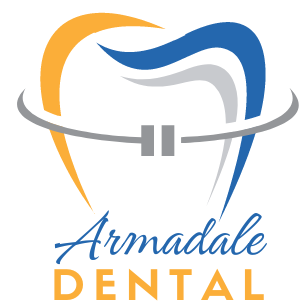A root canal is a common dental procedure designed to save a damaged or infected tooth. While the treatment itself is straightforward and typically pain-free, understanding the recovery process is crucial for ensuring long-term success.
In this article, we’ll discuss what root canal recovery involves, how long it typically takes, factors that influence healing time, and tips for a smooth recovery.
What Is a Root Canal?
A root canal is a dental procedure performed to remove infected or damaged pulp (the soft tissue inside the tooth). This treatment preserves the natural tooth by:
- Removing infected tissue.
- Cleaning and disinfecting the root canals.
- Filling and sealing the canals to prevent reinfection.
After the procedure, a crown or filling is typically placed to restore the tooth’s strength and appearance.
How Long Does It Take to Recover from a Root Canal?
Most people recover from a root canal within a few days to a week. Mild discomfort or sensitivity is common after the procedure but usually subsides quickly.
Typical Recovery Timeline
- First 24–48 Hours: Mild soreness or tenderness may occur, especially when biting or chewing. Over-the-counter pain relievers and rest can help.
- Day 3–7: Discomfort generally decreases, and normal activities can resume.
- 1–2 Weeks: Full healing typically occurs, though follow-up visits may be required for crown placement.
If pain or swelling persists beyond a week, consult your dentist.
Factors That Affect Recovery Time
Recovery time varies depending on several factors:
1. Severity of Infection
Teeth with severe infections or abscesses may require a longer healing period.
2. Complexity of the Procedure
Teeth with multiple canals or curved roots can take more time to heal.
3. Follow-Up Restoration
Placing a crown or permanent filling after the root canal ensures the tooth is fully restored and protected, which can impact recovery.
4. Individual Healing Ability
Your overall health and oral hygiene habits play a significant role in how quickly you recover.
Tips for a Smooth Recovery
1. Manage Pain and Swelling
Use over-the-counter pain relievers like ibuprofen or acetaminophen to reduce discomfort. Applying a cold compress can help minimize swelling.
2. Avoid Hard or Sticky Foods
Stick to soft foods for the first few days to avoid putting unnecessary pressure on the treated tooth.
3. Maintain Good Oral Hygiene
Brush and floss gently around the treated area to prevent infection and promote healing.
4. Follow Your Dentist’s Instructions
Attend follow-up appointments and follow any care instructions provided by your dentist to ensure the tooth heals properly.
5. Report Any Unusual Symptoms
Contact your dentist if you experience severe pain, prolonged swelling, or signs of infection, such as fever or pus.
Signs of Successful Recovery
After a root canal, you should notice the following signs of progress:
- Reduced pain and sensitivity.
- No swelling or redness around the treated tooth.
- Ability to chew and bite without discomfort.
If you don’t experience these improvements or notice worsening symptoms, schedule a dental evaluation promptly.
Armadale Dental Clinic: Markham’s Top Choice for Emergency Dental Care
For those in Markham, Armadale Dental Clinic is one of the best options for emergency dental care. Located at 7720 Markham Road, Unit A4, Markham, ON L3S 3K1, Armadale Dental Clinic is known for its quick response and expert care in handling all types of dental emergencies. Whether you’re dealing with an unexpected dental issue or a recurring problem that needs urgent attention, the experienced team at Armadale Dental Clinic is here to help.
Contact Armadale Dental Clinic at +1-647-695-1779 or via email at info@armadaledental.ca to receive the emergency dental care you need. Their team is dedicated to providing immediate, high-quality treatment to alleviate pain and restore your oral health.
Frequently Asked Questions (FAQs) About Root Canal Recovery
1. Is it normal to feel pain after a root canal?
Yes, mild discomfort or sensitivity is normal for the first few days. Over-the-counter pain relievers and proper care can help manage this. Persistent or severe pain may indicate a problem and should be reported to your dentist.
2. When can I eat normally after a root canal?
You can eat soft foods within a few hours after the procedure, but avoid hard or sticky foods until the tooth is fully restored with a crown or filling.
3. How long should I wait to get a crown after a root canal?
Your dentist will typically schedule a crown placement within 1–2 weeks after the root canal. Delaying this step increases the risk of tooth fractures or reinfection.
4. Can I exercise after a root canal?
Light activities are fine after the procedure, but avoid intense physical activity for 24–48 hours to allow your body to heal.
5. What if my tooth still hurts weeks after the procedure?
Pain lasting beyond a week may indicate complications, such as reinfection or an incomplete seal. Contact your dentist for an evaluation.
Conclusion
Root canal recovery is usually quick and straightforward, with most patients resuming normal activities within a few days. While some discomfort is normal, proper care and follow-up appointments ensure a smooth healing process.
If you’re considering a root canal or recovering from one, maintaining good oral hygiene, avoiding hard foods, and following your dentist’s instructions will help you heal effectively. For any concerns or prolonged symptoms, reach out to your dental professional to ensure your recovery stays on track.
